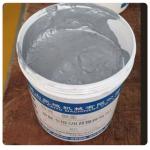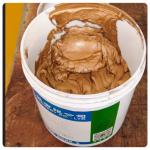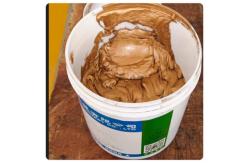Fabric Substrate Optimization with Gold Silkscreen Fabric Stamp Ink Description: Fabric Substrate Optimization for Gold Silkscreen Fabric Stamp Ink When working with gold silkscreen fabric stamp ink, optimizing the
fabric substrate is crucial to achieve high-quality, durable
prints. Here are the key considerations for fabric substrate
optimization: Fabric Selection: - Choose a fabric substrate that is compatible with the gold
silkscreen ink, such as cotton, polyester, nylon, or blended
fabrics.
- Opt for fabrics with a smooth, tightly woven surface, as they
provide the best canvas for metallic prints.
- Avoid heavily textured or napped fabrics, as they can lead to
uneven ink coverage and adhesion issues.
Pre-Treatment: - Pretreat the fabric substrate to enhance the ink's ability to bond
and penetrate the fibers.
- Common pre-treatment methods include:
a. Degreasing/Scouring: Remove any surface contaminants that could
interfere with ink adhesion.
b. Napping/Brushing: Lightly roughen the fabric surface to improve
ink penetration.
c. Corona or Plasma Treatment: Modify the surface energy and
polarity to increase wettability.
d. Primer/Binder Application: Apply a specialized coating to
chemically and mechanically lock in the ink.
Curing and Finishing: - After printing, the fabric is heat-cured at elevated temperatures
(typically 320-400°F) to fully bond the metallic ink.
- The high heat triggers a cross-linking reaction in the ink binder,
creating a durable, long-lasting print.
- Additional finishing steps, such as trimming, plating, or
lamination, may be applied to achieve the desired final product.
Fabric Testing and Optimization: - Conduct thorough testing on fabric samples to identify the optimal
substrate and pre-treatment combination.
- Evaluate factors like ink adhesion, print quality, color vibrancy,
and overall durability.
- Refine the process by adjusting variables like fabric type,
pre-treatment methods, and curing parameters.
Ongoing Quality Control: - Implement robust quality control measures to ensure consistent
fabric substrate preparation and printing results.
- Monitor key performance indicators, such as ink adhesion, print
durability, and color fastness.
- Regularly review and update the fabric optimization process to
accommodate changes in materials, designs, or production
requirements.
By carefully selecting the fabric substrate, applying the
appropriate pre-treatment, and dialing in the curing and finishing
processes, you can achieve superior results with the gold
silkscreen fabric stamp ink. Thorough testing and ongoing quality
control are essential to maintaining high-quality, long-lasting
metallic prints on your fabric products. Let me know if you have any other questions or need further
guidance on optimizing the fabric substrate for your gold
silkscreen printing applications. Quick Detail: Here are some key recommendations for a robust fabric testing and
optimization process: Establish Testing Protocols: - Develop a standardized testing protocol that covers all the
critical factors, such as adhesion, durability, color vibrancy, and
overall print quality.
- Determine the specific test methods, measurement criteria, and
pass/fail thresholds for each evaluation.
- Ensure the testing procedures are repeatable and consistent across
all fabric samples.
Fabric Sample Preparation: - Obtain a diverse range of fabric samples, representing the
different fiber types, weaves, finishes, and potential
pre-treatment options.
- Prepare the fabric samples in a controlled, standardized manner,
applying any necessary pre-treatments or coatings.
- Label the samples clearly to track the specific fabric
characteristics and pre-treatment methods used.
Comprehensive Evaluation: - Conduct a thorough evaluation of the fabric samples, testing the
printed ink's performance under various conditions:
- Adhesion tests (e.g., tape test, cross-hatch test)
- Abrasion and wash tests to assess durability
- Color measurement and evaluation of vibrancy, opacity, and sheen
- Evaluation of print quality, including coverage, definition, and
consistency
By following these strategies, you can establish a robust,
data-driven fabric testing and optimization process for your gold
silkscreen fabric stamp ink applications. This will help you
identify the ideal substrate and pre-treatment combination to
deliver consistent, high-quality metallic prints that meet your
specific requirements. Let me know if you have any other questions or need further
guidance on this topic. I'm happy to provide additional insights or
clarification. Data Collection and Analysis: - Carefully document the test results for each fabric sample,
including quantitative measurements and qualitative observations.
- Analyze the data to identify trends, patterns, and correlations
between the fabric characteristics, pre-treatment methods, and
printing performance.
- Use statistical analysis tools, if applicable, to gain deeper
insights and identify the optimal fabric-pretreatment combination.
Iterative Optimization: - Based on the initial test results, refine the fabric selection and
pre-treatment processes.
- Introduce new fabric samples or variations in pre-treatment
parameters, and repeat the comprehensive testing.
- Continuously iterate and fine-tune the fabric optimization process
until you achieve the desired printing performance and quality.
Ongoing Monitoring and Adjustment: - Implement a system to regularly monitor the performance of the
selected fabric substrate and pre-treatment methods.
- Be prepared to adjust the process if there are any changes in the
fabric supply, ink formulation, or other manufacturing variables.
- Regularly review and update the fabric testing and optimization
protocols to ensure they remain relevant and effective.
| Description | Color silicone ink | | Model | SC-5160 | | Color | Red | | Usage | Silicone Label-making | | Package | Bucket | | Brand name | KAIYU | | Shipping port | Guangzhou, China | | Package type | 1KG, 20KG, 5KG/Bucket |
Advantages:
Located in Shunde district-Shunde National High-Tech industrial
zone in Foshan city, Foshan KaiYu Machinery CO.,LTD established in
2002. Main products including Digital Automatic Vacuum Vulcanize
Machine,Bump Printing Machine, Automatic Dispensing Machine,
Dispensing Table, High Frequency Machine, Automatic Vacuum Cabinet,
Freezing Table, Water Chiller, Gluing machine, Sand Blasting
Machine, Baking Table, Micro-injection Trademark Line, Tools and
related materials . Products are sold to many countries all over
the world. We have professional and technical personnelto provide
you with professional after-sales service and technical guidance
for a long time,and also ready live demonstration for your.
Welcome all customers'visiting to discuss cooperation for win-win
result. |



